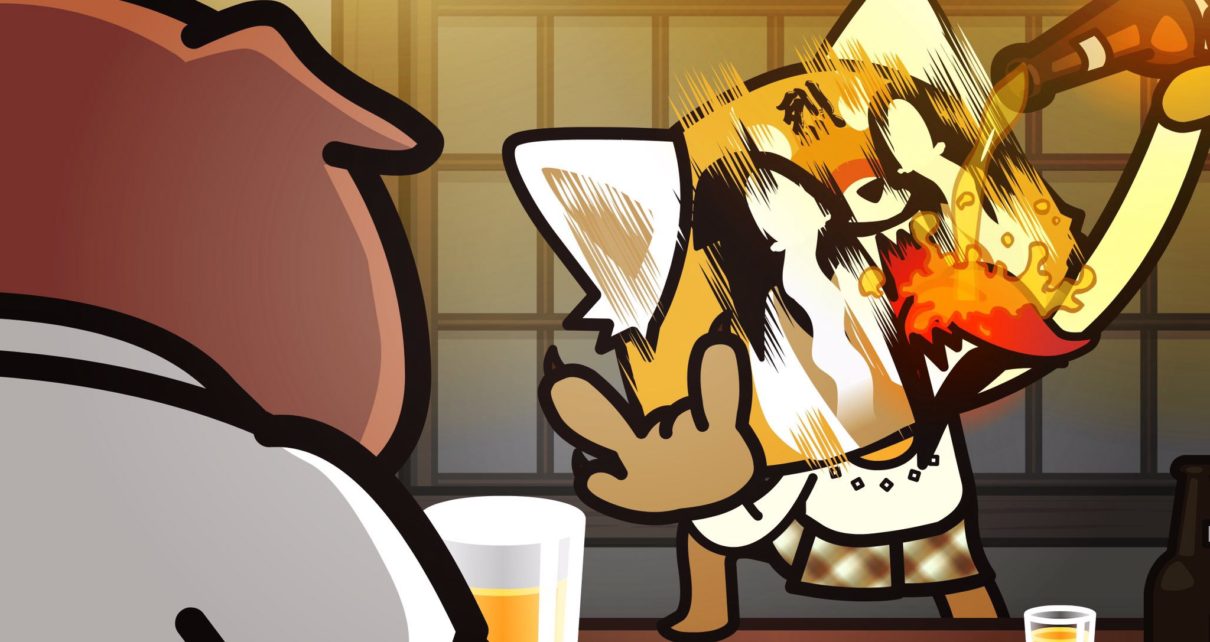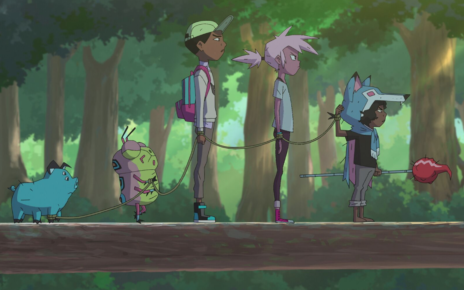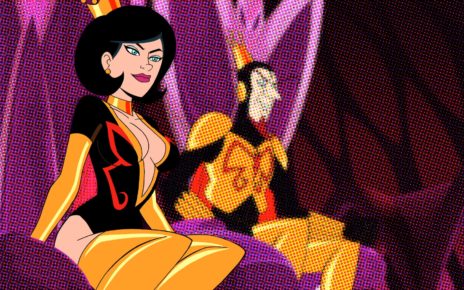The following article contains spoilers for Aggretsuko.
My family is full of angry women. The daily frustrations of shitty jobs, unreasonable bosses, disappointing relationships, and never having any money is enough to make anyone scream. So, well, we do. It might not sound like the death-metal growls of the red panda main character of Aggretsuko, but if a glowing “RAGE” insignia were to appear on any of our faces, it certainly wouldn’t feel out of place.
While the constant burning anger is justifiable, there’s always a pressure to keep it under wraps. Flipping out on your boss tends to get you fired, so it’s important to limit any at-work screaming to minor outbursts in the walk-in.
Life may be slowly getting better for me personally — getting out of the soul-crushing food service/retail sector definitely helps — but it’s still not good. There’s still way too many obstacles for women in the workplace and the world as a whole, and I’m far from the only one to feel that way. Women have long been expected to grin and bear various daily microaggressions in order to keep the peace (and their jobs). This required silence further enforces societal expectations of women as soft, happy beings untainted by burning rage.
‘Aggretsuko’ feels so intensely significant: the protagonist’s rage is not only shown without shame, but is central to the show’s plot.
In other words, anger is still an emotion reserved for men. White men specifically. Men can rage and scream and simply be seen as “tough” (and consequently be elected president), whereas women risk being labeled a shrill harpy on her period for revealing even a hint of emotion—and if they hold their emotions inside, they’re called cold, creepy, and sometimes still shrill. Damned if you do, damned if you don’t, meaning if you’re a woman, you’re mostly just trying to restrain yourself from constantly screaming “DAMN IT!” at the top of your lungs.
Even more damning than the political implications are the personal ones. Being an angry woman is lonely, so most of us take pains to hide our rage. And art both reflects and enforces this cultural expectation, by rarely showing angry women as relatable characters, if they’re shown at all.
This is why Aggretsuko feels so intensely significant: the protagonist’s rage is not only shown without shame, but is central to the show’s plot. A distinctly Japanese story, there’s plenty of cultural references and anime tropes — the first minute of the show is straight out of a shoujo playbook, complete with a “first day” monologue and cherry blossoms. This cute façade could have limited viewership to previously indoctrinated fans of Japanese pop culture company Sanrio — even now-devoted viewers admit to thinking they wouldn’t be into it at first — but Retsuko’s justifiable frustration at her job, relationships, and life in general have skyrocketed the series into mainstream popularity.
Sure, some of the situations are unlikely to be relatable for American viewers. Retsuko’s stress about being spotted in her sandals before changing into her work shoes, her misogynistic boss’s expectation that she clean his desk and bring him tea, and the emphasis on drink-pouring etiquette are unique to Asian work culture. On the flip side, brutish Mr. Ton’s sudden shift towards a more positive demeanor would be unlikely to be so unnerving for workers used to constantly shifting U.S. management styles.
In the personal realm, American women are far more likely to suffer through dates with someone like the obnoxious sales guy Manumaru rather than experience Retsuko’s quietly hopeful but ultimately disappointing relationship with Resasuke (who’s herbivorous tendencies are implied in his introduction, then visually confirmed when he returns to a lush, plant-filled apartment post-breakup).
Despite the cultural differences, it’s Retsuko’s reactions to her life’s frustrations that make the show work. The thought of screaming out your true feelings to your boss, or ending things with a boring dude via epic death-metal send off is universally appealing.
Showing the world who you truly are is empowering, and, like Retsuko, more and more women are revealing themselves to be full of white-hot rage. In addition to feeling fucking amazing, finally displaying our collective anger serves as a way to establish solidarity. In the show, Retsuko bonds with upper management Washimi and Gori after they frequent her favorite karaoke haunt after yoga. She’d been so intimidated by these powerful, lean-in style career women that she’d refused their first invitation—but after Gori types in her go-to song, Retsuko wows her superiors with her aggressive death metal performance.
With the restrictive social boundaries smashed to pieces, the women are able to fully support each other. Washimi uses her influence to try to alleviate Retsuko’s work frustrations, while the young red panda helps comfort a heartbroken Gori about her recently-ended relationship.
This fiction is reflective of a fast-changing reality, where women’s stories are finally being heard, anger and all. To borrow from the late, great Ursula K. Guin, “we are volcanoes,” and in 2018, we’re starting to erupt. Seeing this cultural moment captured in a lovable character lends a surprising ray of hope for the future—even if it is encased in the daily drudgery of office work, annoying coworkers, and other slice of life stresses that have millennial viewers saying “same.”
Even if you’re not a mild-mannered office worker with a death-metal secret—I’d self-diagnose as more of a blend between sarcastic Fenneko and free-spirited Fuko—Aggretsuko’s take on dealing with the stresses of modern life is the catharsis we’ve been craving. It’s also a necessary reminder that behind many women’s smiles lurk souls that are metal as hell. I know that personally, it’s helped me own my anger and reclaim my rage. I only hope that other women can say the same.
Thanks for reading The Dot and Line, where we talk about animation of all kinds. Don’t forget to for this article and follow us on Twitter and Facebook.





